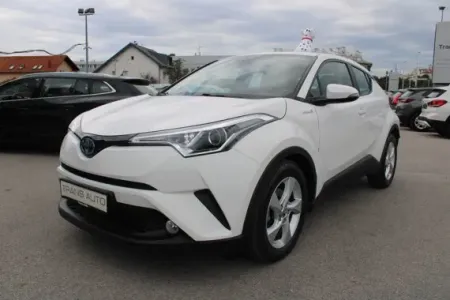
Toyota: Driving Innovation, Inspiring Confidence
Toyota Motor Corporation is the largest automotive corporation in Japan. It is the main part of the public company Toyota Group. The company's headquarters is located in Toyota, Aichi Prefecture, Japan.
Toyota Models
History of Toyota.
How did the Toyota brand come about?
The history of Toyota began in 1924, when a Japanese entrepreneur, Sakichi Toyoda, invented an automatic loom that stopped itself if there was a problem with thread breakage. The production of machine tools was established in a small workshop of its own, the company was called Toyoda Automatic Loom Works. In 1929 the loom patent was sold to a British company and the capital from the sale of the patent was invested in the automobile industry. In the same year, Kiichiro Toyoda, son of Sakichi Toyoda, traveled to Europe and the United States to study automobile business and automobile manufacturing. And already in 1930 he began to develop his own cars with a gasoline engine. Within the company, a new department was created, of which Kiichiro Toyoda became the director. And later, in 1937, a separate car manufacturing company, Toyota Motor Co., was founded. This is how the Toyota we know today was born.


The first Toyota car.
In 1934, Toyota released its first gasoline engine, the Model A, which was installed in 1935 on the first Toyota A1 car, and then on the G1 truck. And the production of the second Toyota AA model began in the next 1936. The first Toyota models were similar to American models from Dodge and Chevrolet. After that, the Japanese authorities banned the import of American cars, which contributed to the successful sales of Toyota cars.
Toyota and World War II.
During the Second World War, Toyota almost completely stopped the production of civilian cars and switched to the production of equipment for the Japanese Imperial Army. Toyota produced armored vehicles, amphibious all-terrain vehicles, but the production of military trucks for the needs of the army and navy was a priority. But due to an acute shortage of raw materials and components, it was necessary to produce equipment in the basic configuration, saving on everything, for example, Toyota produced trucks with one headlight.


Toyota after World War II.
Toyota factories were badly damaged by Allied bombing raids during World War II. Moreover, after the surrender of Japan on August 14, 1945, the US-led occupying forces banned the production of passenger cars in Japan. But the production of trucks for the restoration of infrastructure was allowed. A contract was also signed with Toyota for the repair of American military equipment. But by 1947, with the start of the Cold War between the US and the USSR, America's priorities had shifted towards acquiring an ally in Japan rather than punishment.
The first post-war Toyota car.
In 1947, Toyota launched the first post-war car, the SA model. And already in 1949, all restrictions on the production of passenger cars in Japan were lifted. In the early 1950s, Toyota emerged from the crisis, but had to close some factories and lay off workers. When the Korean War began, Toyota received an order for 1,000 trucks from the US Army. And this order helped improve the company's performance.


Management Philosophy - The Toyota Way.
In 1950, Toyota executives, including Kiichiro's cousin Eiji Toyoda, made a trip to the United States of America, where they received training from the Ford Motor Company and observed the work of dozens of American manufacturers. The knowledge they gained during the trip led to the Toyota Way, the management philosophy and production system of Toyota, which is based on the practice of lean manufacturing, which turned the company into a leader in the automotive industry.
The history of the Toyota logo.
The history of the Toyota logo begins in 1937. The first Toyota logo is a red Toyoda lettering in a rectangle placed inside an octagon resembling a diamond. In 1949, Toyota has a new logo, round and red, with a white line. Inside is the surname of the founder of Toyota in Japanese. From 1958 to 1989, simply the inscription Toyota, only the font and color change. In 1989, a familiar graphic symbol is added to the Toyota lettering: intersecting ovals that represent the connection between the hearts of customers and the heart of the company. They also symbolize a benevolent and strong trusting relationship. In addition, the ovals fold into a rounded T, the first letter of the founder's last name.


Toyota today.
In 1957, the Toyota Crown became the first Japanese car to be exported to the Americas and Brazil. In 1959, the city of Koromo, in which the factories and headquarters of Toyota are located, was renamed Toyota. In the 1960s, Toyota began to expand rapidly. The first Toyota car produced outside of Japan left the assembly line in 1963 in Melbourne, Australia. In Japan itself, Toyota cars have become the best-selling. So, in 1992, Toyota accounted for 40% of cars sold in Japan. Toyota Motor is today the largest automaker in the world and shares the top spot with General Motors and Volkswagen.
eXus Dev 24.5.2023
































































